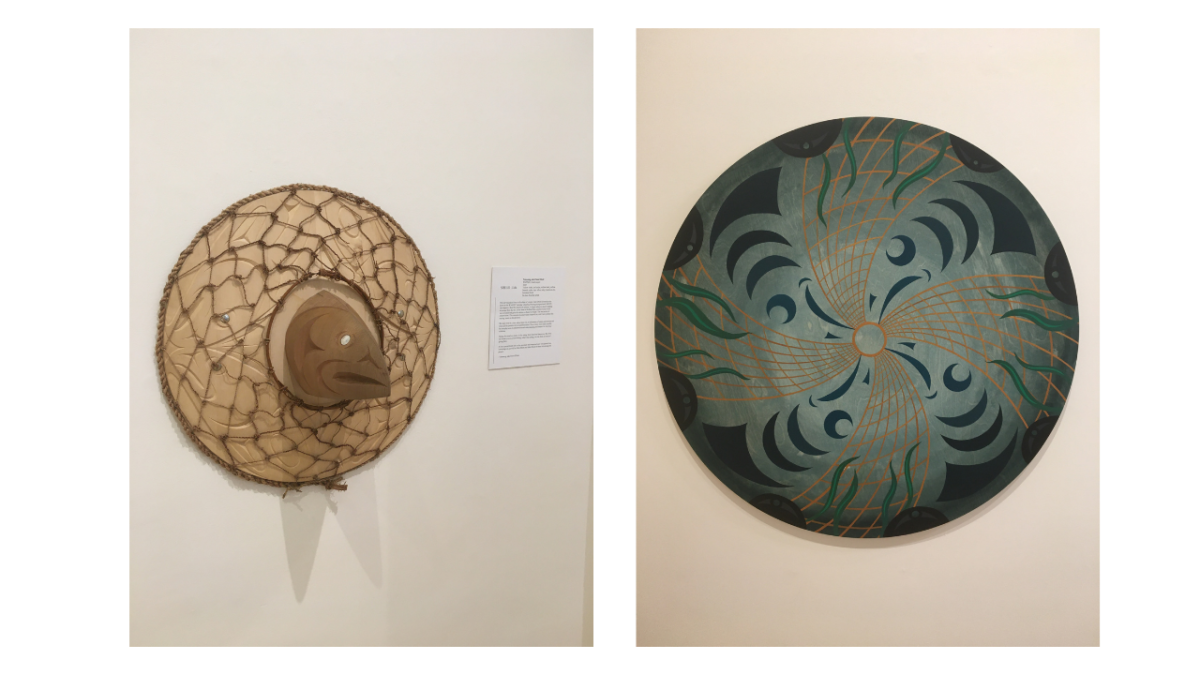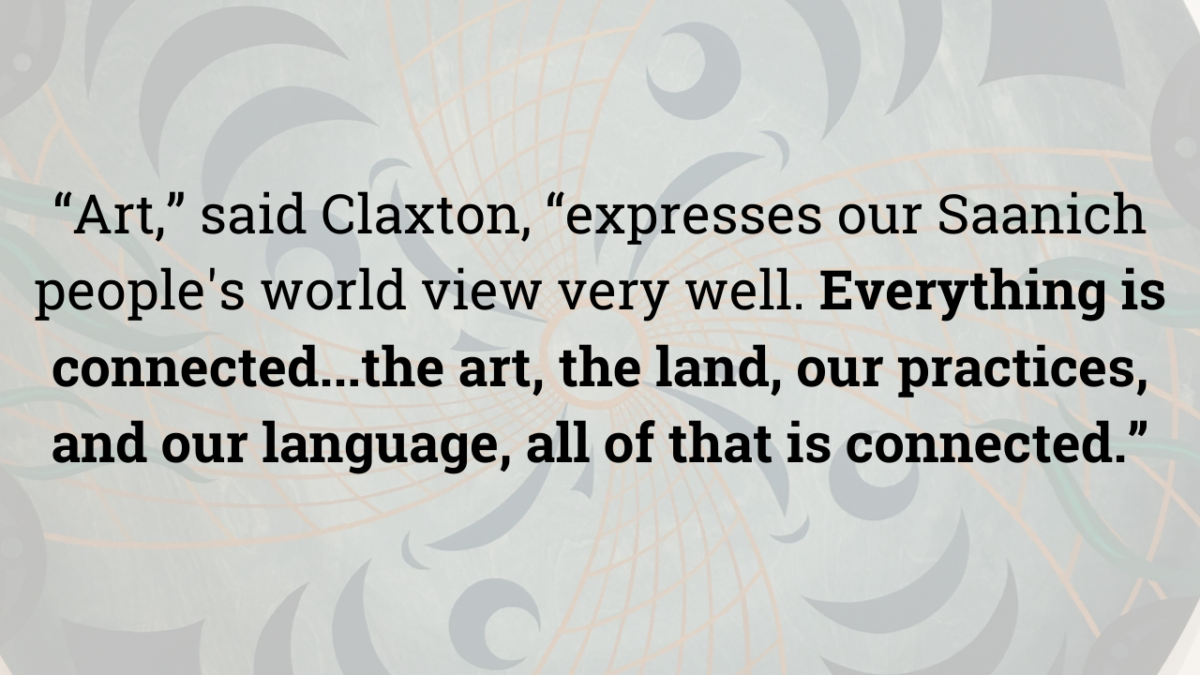“To Fish as Formerly” seeks to reinvigorate Reef Net fishing

UVic’s Legacy Art Gallery’s newest exhibit, “To Fish as Formerly,” offers a powerful and educational exploration of the traditional fishing practices of the W̱SÁNEĆ (Saanich) and Salish peoples, while exploring how their treaty right to fish as they did before colonization was ignored.
The exhibit includes works from W̱SÁNEĆ artists that look at the importance of the traditional SX̱OLE (Reef Net) fishing practice to the cultural and spiritual world of the W̱SÁNEĆ people. Two particular pieces by Sarah Jim and Temoseng (Chasz Elliot) stand out as incredible artistic embodiments of the importance of Reef Net fishing within the W̱SÁNEĆ community, expressing its significance to the culture and beliefs of the W̱SÁNEĆ and Salish peoples.
“Reef netting is unique to the Straits Salish people,” said exhibit curator Nicholas XEMŦOLTW̱ Claxton. “This fishing practice formed the backbone of W̱SÁNEĆ culture and society.”
Claxton is a master’s and PhD graduate of the University of Victoria and is currently working as an assistant professor in the University’s School of Child and Youth Care. The revitalization of tradition SX̱OLE practices has always been a focus of his research and work as an educator.
The exhibit emerged from Claxton’s master’s work in the Indigenous Governance program where he began to focus on articulating what “to fish as formerly” meant to him. The quote, which gives the exhibit its name, comes from a 1852 Douglas Treaties that protected the W̱SÁNEĆ people’s right to continue their traditional fishing practices.
“Over the next 163 years of colonization, the knowledge, ceremony, practice, and educational way of the SX̱OLE was nearly lost,” writes Claxton. After the Oregon Treaty of 1846, Straits Salish territory was divided by an unnatural line between British territory and the United States, causing a severing of relations between the different Salish peoples. The 1870s saw the rise of a settler-run fishing industry and restrictions on Indigenous fisheries and, in 1890, industrial salmon fisheries were in full swing, and Indigenous fishing traps were made illegal.
“It is really important to tell a story,” said Claxton about the exhibit. “I know it’s more than just art.”

The exhibit, which was co-curated by UVic graduate student Katie Hughes, seeks to tell the story and reinvigorate the cultural practice of Reef Net fishing, while showcasing its importance to the W̱SÁNEĆ and other Salish peoples.
As a member of the W̱SÁNEĆ community, the fight to restore the right to traditional fishing practices is an issue that is close to Claxton’s heart. In 2014, Claxton was bestowed the shared title of ȻWENÁLYEN (Reef Net Captain) with Allan Claxton. This ceremony, along with his revitalization work and study of traditional practices, allowed Claxton to return to his family’s traditional SWÁLET (Reef Net Location) at ILEĆIAN Bedwell Harbour, on SDȺY ES (Pender Island) and perform the first Reef Net fishing at the site in over 100 years.
Claxton says that this fishing knowledge “is living, and has the opportunity to be passed on again, which is very important. It’s reconnection.”
In the exhibit and in his work as an educator, Claxton seeks to provide “opportunities for youth to learn about our [W̱SÁNEĆ and Salish] knowledge and connect to the land, our elders, and learn our language.”
Before the onset of COVID-19, the exhibit was meant to provide educational opportunities for kids by providing tours of the gallery display. Although there have been a few, it has sadly not been to the scale Claxton had hoped.
The exhibit includes many detailed descriptions of the ceremonial processes that go into the building of the Reef Nets according to tradition. A large model display in the centre of the room showcases the finer details of how Reef Net fishing works.
The gallery also contains multiple digital displays showcasing members of the W̱SÁNEĆ community explaining the practice of Reef Net fishing, displays of modern versions of Reef Net fishing, and also underwater footage of a traditional SWÁLET and the dozens of net weight stones that had been lost in the water from hundreds if not thousands of years ago.
Other pieces in the gallery explore the traditional stories of the W̱SÁNEĆ people, tying the practice of Reef Net fishing into the origin stories of the W̱SÁNEĆ people themselves, who traditionally see salmon as close relatives of themselves.
“Art,” said Claxton, “expresses our Saanich people’s world view very well. Everything is connected … the art, the land, our practices, and our language, all of that is connected.”
Beyond its educational goals, Claxton chose to turn his community and research work into an art gallery exhibit to assert that the W̱SÁNEĆ did not voluntarily give up their traditional practices.
“This is who we are and this is why the land and the water, our territories, are important to us. Through colonialism and the Indian Act, we’ve been really disconnected from the land, from the water, from our language … we want to be connected to our territories and our homeland, and ultimately, we’ve never given it up. It was taken away.”
The exhibit will be on display at the Legacy Art Gallery until Nov. 21.








